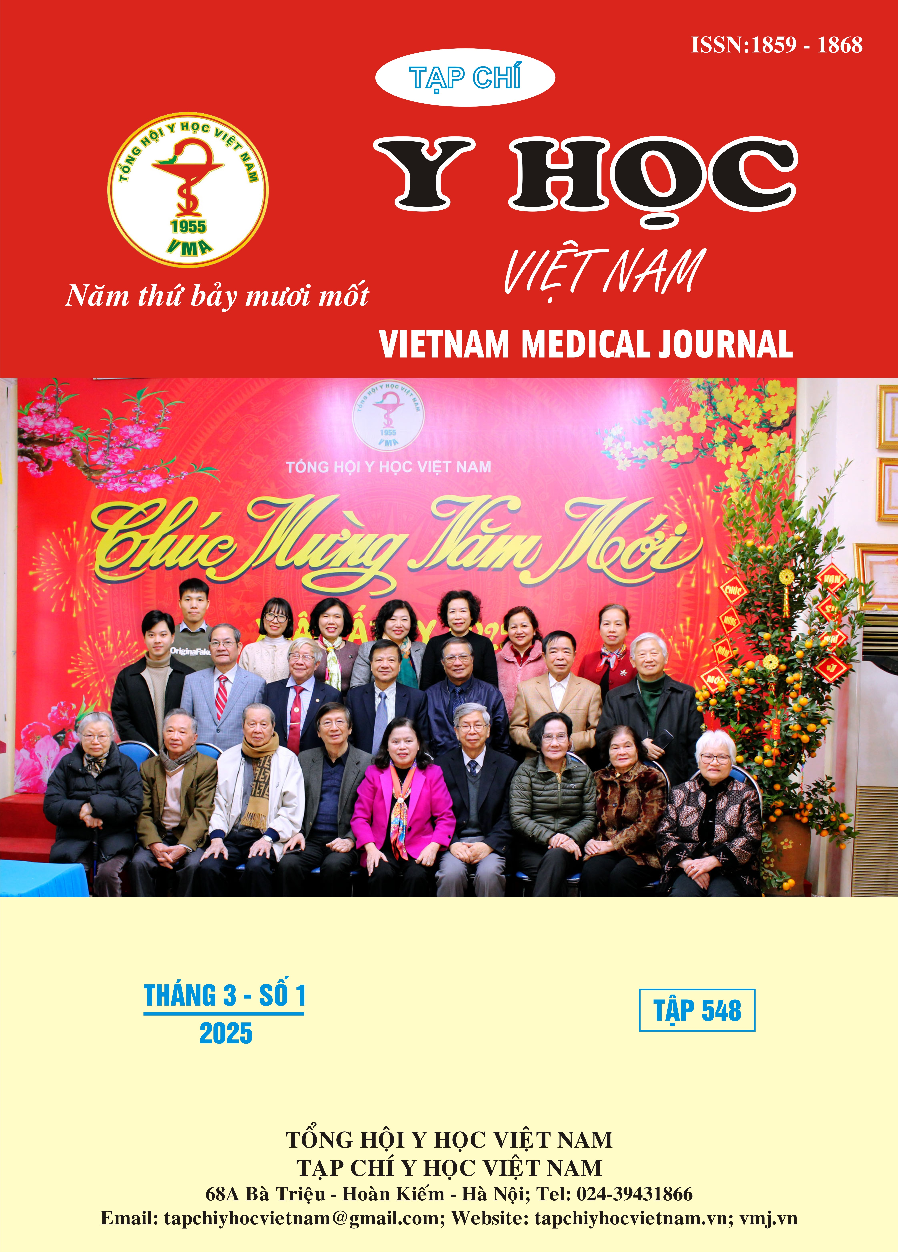CLINICAL AND LABORATORY CHARACTERISTICS OF LATE-ONSET CONGENITAL FATTY ACID METABOLISM DISORDERS
Main Article Content
Abstract
Fatty acid oxidation disorders (FAOD) are rare autosomal recessive metabolic conditions caused by genetic variants that affect the enzymes and proteins responsible for transporting and metabolizing fatty acids within the mitochondria. These conditions are often diagnosed late, leading to fatal outcomes or severe complications. Objective: To describe the acute episode characteristics in children with late-onset congenital fatty acid metabolism disorders at the Vietnam National Children’s Hospital. Subjects: 13 patients diagnosed and treated from January 2017 to September 2023. Methods: Descriptive study. Results: Clinical features of acute episodes included the earliest onset age of 74 days and the latest at 160 months, with a median age of 27.8 months. The main clinical symptoms were hepatomegaly (92.3%), poor feeding (84.6%), lethargy (76.9%), and respiratory distress (69.2%). Laboratory findings showed elevated blood lactate levels (100%), elevated GOT (100%), elevated GPT (84.6%), metabolic acidosis (88.9%), and hypoglycemia (61.5%). Conclusion: Clinical and laboratory features of late-onset congenital fatty acid metabolism disorders are diverse and non-specific. Awareness in clinical practice is essential to avoid missed diagnoses. Keywords
Article Details
Keywords
Fatty acid metabolism disorders, mitochondrial β-oxidation
References
2. Baruteau J, Sachs P, Broué P, et al. Clinical and biological features at diagnosis in mitochondrial fatty acid beta-oxidation defects: a French pediatric study of 187 patients. J Inherit Metab Dis. 2013;36(5):795-803. doi:10.1007/s10545-012-9542-6
3. Yamada K, Osawa Y, Kobayashi H, et al. Clinical and molecular investigation of 37 Japanese patients with multiple acyl-CoA dehydrogenase deficiency: p.Y507D in ETFDH, a common Japanese variant, causes a mortal phenotype. Mol Genet Metab Rep. 2022;33: 100940. doi:10.1016/j.ymgmr .2022.100940
4. Gómez H, Mizock BA. Chapter 67 - Hyperlactatemia and Lactic Acidosis. In: Ronco C, Bellomo R, Kellum JA, Ricci Z, eds. Critical Care Nephrology (Third Edition). Elsevier; 2019:394-404.e3. doi:10.1016/B978-0-323-44942-7.00067-4
5. Häberle J, Burlina A, Chakrapani A, et al. Suggested guidelines for the diagnosis and management of urea cycle disorders: First revision. J Inherit Metab Dis. 2019;42(6):1192-1230. doi:10.1002/jimd.12100
6. Bleeker JC, Kok IL, Ferdinandusse S, et al. Impact of newborn screening for very-long-chain acyl-CoA dehydrogenase deficiency on genetic, enzymatic, and clinical outcomes. J Inherit Metab Dis. 2019;42(3):414-423. doi:10.1002/jimd.12075
7. Gosalakkal JA, Kamoji V. Reye syndrome and reye-like syndrome. Pediatr Neurol. 2008;39(3): 198-200. doi:10.1016/j.pediatrneurol.2008.06.003
8. Marles SL, Casiro OG. Persistent neonatal hypoglycemia: Diagnosis and management. Paediatr Child Health. 1998;3(1):16-19. doi:10.1093/ pch/3.1.16
9. Gandhi K. Approach to hypoglycemia in infants and children. Transl Pediatr. 2017;6(4):408-420. doi:10.21037/tp.2017.10.05


